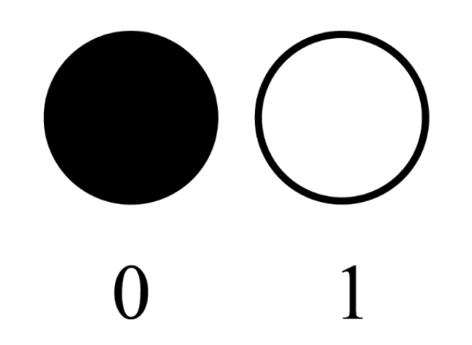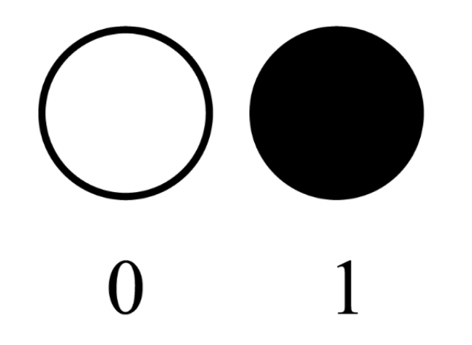Chapter 2. One Qubit
Conventional bits have one binary parameter to play with—we can initialize a bit in either state 0 or state 1. This makes the mathematics of binary logic simple enough, but we could visually represent the possible 0/1 values of a bit by two separate empty/filled circles (see Table 2-1).
| Possible values of a bit | Graphical representation |
|---|---|
0 |

|
1 |

|
Now on to qubits. In some sense, qubits are very similar to bits: whenever you read the value of a qubit, you’ll always get either 0 or 1. So, after the readout of a qubit, we can always describe it as shown in Table 2-1. But characterizing qubits before readout isn’t so black and white, and requires a more sophisticated description. Before readout, qubits can exist in a superposition of states.
We’ll try to tackle just what superposition means shortly. But to first give you an idea of why it might be powerful, note that there are an infinite number of possible superpositions in which a single qubit can exist prior to being read. Table 2-2 lists just some of the different superpositions we could prepare a qubit to be in. Although we’ll always end up reading out 0 or 1 at the end, if we’re clever it’s the availability of these extra ...
Get Programming Quantum Computers now with the O’Reilly learning platform.
O’Reilly members experience books, live events, courses curated by job role, and more from O’Reilly and nearly 200 top publishers.

